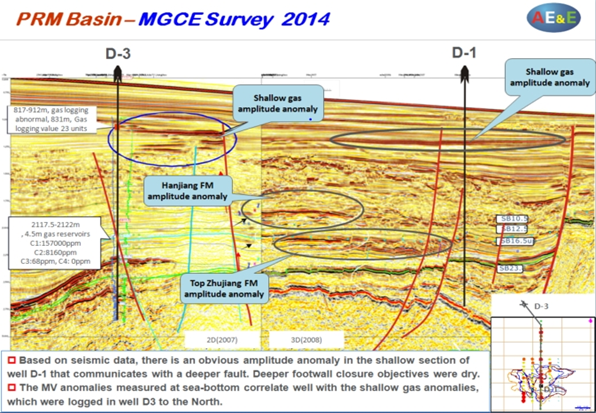Refer to AAPG Memoir 66 *, which describes and compares light HC microseepage mechanisms. Near-vertical buoyancy of ascending microbubbles of gaseous HC's is widely accepted by several subject matter experts as the dominant mechanism, supported by computer modeling & simulations and producing field observations, even in the absence of faulting or (wide) fracture zones and macroseepage migration into the shallow overburden. Low flux, but steady buoyancy of C1-5 molecules is driven by vertical gas-water capillary pressure differences through micro-fracture networks which even exist in fine clastic thin-bed or mud sequences at shallow depths. Whereas vertical migration maybe be affected by shallow por/perm contrasts and barriers and deflected laterally, apical microseepage is largely not and remains near-vertical, as evidenced from producing field observations. Where the microseepage 'chimney' is fully cemented (zero permeability), it is reasonable to expect some minor halo and diversion effects, but tensile microfractures will still exist. Field measurements from many different geographical and geological (overburden) settings have not indicated any significant vertical permeability limitations. Offshore deepwater Brunei and Sabah, vertically above active seabottom seeps, new microbial colonies continue to feed and grow on top of meters thick, low permeability ‘reefal’ calcretes produced by older bacterial populations and their CO2 conversion and reaction with seawater into carbonates (CO2+H2O+Ca2+= CaCO3+2H+).
*) Klusman, R.W. and M.A. Saeed, 1996, A comparison of light hydrocarbon microseepgaeg mechanisms, Chapter 12, p. 157-168
Microseepage does not stop at a shallow gas pocket, as evidenced from field meassurements in e.g. the example below from the South China Sea and many others. Vertical tertiary migration via faults has charged the shallow Hanjiang Formation with gas. C1-5 molcules may have stayed there for 'some' geological time to pressure up the reservoir, but at a certain moment buoyancy-driven microseepage will continue further to seabottom, as evidenced from the clear MV anomaly measurements (red/orange points in the insert box). Lower footwall objectives were all dry in well D1.

No, buoyancy-driven microseepage works fine with normal (hydrostatic) pressured reservoirs. The higher the pressure, the stronger microseepage. Microseepage is ineffective in low-pressure systems, which are geologically rare at greater depths. Microseepage reduces dynamically to lower and background levels with depletion, as evidenced from US field observations by Phillips Petroleum in the mid 80’ties and thereafter.
Such rates are from computer flow path mechanism modeling and from actual producing US field observations by Phillips Petroleum et al (AAPG Memoir 66); also refer to AAPG Bulletin, “Evaluation of possible gas microseepage mechanisms”, V. 84, no. 11 (Nov.2000 ) p. 1775-1789 by Alton Brown (Arco). Rates to surface can be as high as 1000m/year, depending on the overburden, as observed over US producing fields undergoing depletion drive or waterflooding. On average, rates are however 100’s m/year.
Vertical trace microseepage occurs at at a 'continuous' gas-phase flux at C1-5 molucular scale though narrow aperture, tiny microfractures, but slow enough to preserve HC accumulations for geological lengths of time. A continous gas-phase migration would require a lower threshold pressure before initiating vertical seepage. Microfractures are not known to depressure deeper accumulations.
It is not impossible that a rapid ascent through a highly effective network of wide-aperture fractures would create a rate of gas loss and rapid vertical migration velocities too great to be sustained by smaller accummulations over geological time, unless there is an excess primary/secondary migration and dynamic recharge. Such accumulations could be underfilled or of low saturations. Leaky traps often have an expression on seismic with gas chimneys and/or shallow anomaly pockets.
HC fill and phase prediction is accurately based on geochemical compositional & isotope analysis. Depth prediction is indirectly from 4G integration (AE&E company’s trademark) with seismic and geological trapping & mapping vertically below the microbial anomaly, and can be calibrated with basin maturity modeling. The latter is usual carrried out by the client.